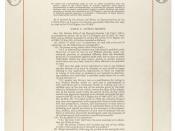What is Sexual Harassment Discrimination?
One of the most common gender-related problems in the workplace is sexual harassment. Under federal law in the United States, sexual harassment can take on many forms, which include unwelcome sexual advances, or other unwelcome verbal, physical, or visual conduct of a sexual nature that occurs in the workplace or in an educational setting under certain conditions. Whether the individual is male or female, such behavior is illegal if sex is made as a term or condition of the individual's employment or academic achievement, as a basis for employment or academic decision affecting the individual, or in a manner that creates an intimidating or hostile working environment.
The Congress of the United States first prohibited discrimination based on an individual's sex when it passed the Civil Rights Act of 1964. Nevertheless, it was not until the mid-1970s that the U.S. courts began to interpret sexual harassment as a form of illegal sex discrimination
"Sex-Plus" Discrimination and Pregnancy
After the enactment of Title VII of the Civil Rights Act of 1964, the federal courts treated sex discrimination claims just like claims relating to other classifications.
However, the courts had not initially considered a particular development. The development was when some companies incorporate policies that refused to employ married or pregnant women, women over a certain age, or women with pre-school-age children. The employers' justification was that the company had many women on their payroll, hence negating claims that they discriminated based on sex. The courts decided that this type of employment policy was only applicable to women; therefore, these types of policies were in violation of Title VII under the basis of sex plus some other, facially neutral qualification (NIEHS, 2003). In 1978, the Pregnancy Discrimination Act was enacted as an amendment to Title VII.


